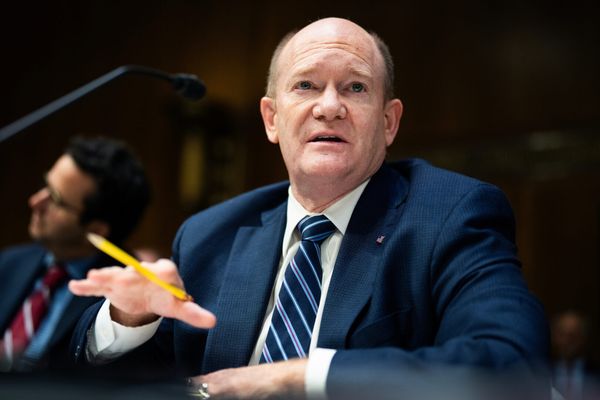Slutty menswear – GQ magazine’s senior style editor’s words, not mine – otherwise known as short-shorts, are seemingly hot this summer. A great proponent of this thigh-skimming look is Gladiator II star Paul Mescal, who caused media frenzy as the king of short-shorts in a tiny Gucci striped cotton pair for the brand’s menswear show during June’s Milan Fashion Week.
This recent fanfare is far removed from the advice of fashion designer, Hardy Amies who wrote in his 1964 work, The ABC of Men’s Fashion, that men should only be seen in shorts on the beach or a walking tour. In fact, up until the 1950s in the US, the wearing of shorts by men was banned entirely in some states, due to concerns over common decency.
So how did the short go from indecent and functional to short and sexy?
Historical accounts tend to trace the origin of shorts to the 18th-century schoolboy. These shorts were usually baggy and gathered at the knee, similar to the style of breeches, which were the height of fashion during the Regency period for both young boys and gentleman of the aristocracy. According to American historian Ann Lombard, breeches allowed boys the freedom to run and climb.
No one’s 20s and 30s look the same. You might be saving for a mortgage or just struggling to pay rent. You could be swiping dating apps, or trying to understand childcare. No matter your current challenges, our Quarter Life series has articles to share in the group chat, or just to remind you that you’re not alone.
Read more from Quarter Life:
Rihanna and radical pregnancy fashion – how the Victorians made maternity wear boring
Five reasons you should consider renting your outfits this wedding season
‘Digitising’ your wardrobe can help you save money and make sustainable fashion choices
Breeches evolved into a very similar style called knickerbockers, defined as loose fitting trousers to the knee or just below. Knickerbockers became popular in the 19th century and were eventually adopted by women.
Back at school in Britain, however, boys were seeking more freedom in their clothing and they started to favour shorter shorts than the knickerbocker. Apparently, because they were much easier for going to the loo.
While shorts were getting… shorter they were still relegated to boyhood and, for men, sporting or casual events, until the the first and second world wars.
In 1914, the British Army were stationed in Bermuda and found themselves in much more tropical conditions than they were used to. Lucky for them, Nathaniel Coxon – the owner of a local tea room, had invented a formal short that ended just above the knee to keep his staff cool. So was born the Bermuda short.
The late great British prime minister Winston Churchill, purportedly said, following a visit to the island in 1916, that shorts were a bad fashion choice, except if they came from Bermuda.
Bermuda shorts became fashionable in the US during the 1920s and 1930s as they were associated with travel and leisure and so were a symbol of wealth. Bermuda shorts were first mentioned in American Vogue in 1948 and by the 1950s had become a staple item in American suburbia.
Bermuda shorts, while perhaps a more conservative approach than short-shorts, are still a key style in contemporary menswear. This year they are a dominant trend in womenswear, with Vogue declaring Summer 2024 as the summer of the nu-metal Bermuda short – baggy tailored shorts that fall just below the knee and have a 90s grunge feel.
However when it comes to really upper-thigh-skimming hems, it was during the 1970s and 1980s that men started to wear very short and tight shorts, influenced by a growth of casual wear in men’s fashion and the fitness craze of the 1980s. This trend is perfectly encapsulated by the pair sported by actor John Travolta in the 1985 film, Perfect.
It was the era for the garment. In a celebration of the greatest short wearers of all time by GQ magazine their short-short’s celebrity hall of fame included Elton John, photographed in shorts while leaving New York’s iconic Studio 54 in the 1970s. He was also joined by Hollywood actor, Tom Selleck who in his role as Magnum P.I. in the 1980s was a great supporter of tight shorts – despite reportedly having been criticised for wearing shorts that were too short.
From the catwalk to the streets, from the beach to the gym, the rising hemline of men’s shorts is undoubtedly making its stand once again in contemporary menswear. Style guides are awash with features on how best to wear short-shorts, including the Mescal look with button-down shirt and loafers.
Has the rise of hemlines created an objectification of the male thigh, and – as The New York Times recently questioned – how short should shorts really be? Well that, according to global fashion and media brand High Snobeity, is one of the world’s eternal questions. How short or long shorts should be depends on two important factors, height and how confident a man feels.
Thigh-bearing does take confidence and certain people calling them “slutty” has been associated with a celebration of “himbos, hotness and health kicks” – again in the words of GQ’s style editor. Feeling sexy in what you wear should be a component of men’s fashion as much as it is of women’s.
Such positivity and redefining of masculinity with fashion began in the 90s with Calvin Klein’s hugely successful men’s underwear range and advertising campaigns. Academic Shaun Cole noted how the move of menswear from functionality to fashionable and sexy, as epitomised by Klein, coincided with a cultural change in the representation of male bodies.
So why not be a bit daring and make like Mescal and beat the heat in some short-shorts because, this summer at least, they are king.

Looking for something good? Cut through the noise with a carefully curated selection of the latest releases, live events and exhibitions, straight to your inbox every fortnight, on Fridays. Sign up here.
Naomi Braithwaite does not work for, consult, own shares in or receive funding from any company or organisation that would benefit from this article, and has disclosed no relevant affiliations beyond their academic appointment.
This article was originally published on The Conversation. Read the original article.







